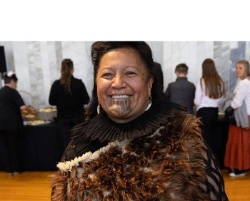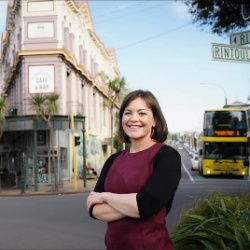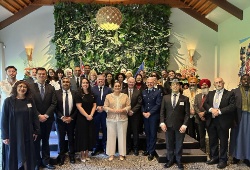Technology List And Panel Advice Show Police Technology Policies Are Working
New Zealand Police has released a list of the technology
capabilities it uses
across different aspects of the
organisation as another step in its strengthened approach to
technology and increased transparency in that
space.
The New Zealand Police Technology
Capability List includes a wide range of technologies from
equipment used by the Police Dive Squad, to speed
cameras,
and 3D Photogrammetry.
“Technology
is essential to our business, it enables us to police more
effectively and efficiently, and supports innovation in our
work. It will play an important role in policing in the
future,” Deputy Chief Executive Insights and Deployment
Mark Evans says.
“Policing by consent is at the
core of all we do, and we want to reassure our communities
that we have their best interests at heart. We are using
technology to support our mission to prevent crime and harm
through exceptional policing.”
This first list
contains the most significant public facing technology
capabilities used by NZ Police, as well as some other
capabilities that provide administrative support. It will be
updated on an ongoing basis to capture new capabilities as
we continue to review what we use.
Last year,
Police released a policy around the use of emergent
technology, signed up to the Algorithm Charter for Aotearoa
New Zealand, and set up an independent expert panel to
externally peer review the use of emergent
technologies.
It also commissioned specialist
consultants Taylor Fry to conduct a stocktake of algorithms
in use or development by New Zealand Police, and to provide
advice on best practice to assure safe and ethical
development and use of algorithms moving forward. The report
found Police’s base use of algorithms is sound. However,
in specific areas improvements or further consideration is
needed.
One consideration highlighted was the need
for a Te Ao Māori lens. Work is also well underway on a new
principles-based framework to guide the future development
of emergent technologies, and this includes the
consideration of Te Ao Māori.
This report was
referred to the expert panel and is the first piece of
advice provided to Police. The advice has identified aspects
that require further attention.
“This is what we expect from the panel, to be able to critique and provide guidance, and this demonstrates it is working well,” Mr Evans says.
In response to the road policing
algorithm, Police acknowledge the concerns raised by the
panel and the Taylor Fry report. This algorithm was only
under development and it is no longer being
progressed.
Police has considered and accepted
all, bar one, of the recommendations in the Taylor Fry
Report where the panel provided further advice on that
matter.
Police has accepted all the Expert Panel’s
advice.
“The advice and guidance that has been
provided to Police will enable us to take the next steps to
strengthen our governance processes and adopt best practice
guidelines to ensure the safe and ethical use of
algorithms.” Mr Evans says.
“Most New
Zealanders would expect an organisation the size and
function of Police to be using algorithm technology to keep
our communities safe. It allows us to do our jobs
effectively and channel resources to the right
places.”


 Gordon Campbell: On Why The Free Market Is A Scam, Plus The Epstein Saga
Gordon Campbell: On Why The Free Market Is A Scam, Plus The Epstein Saga Te Pāti Māori: More Mokopuna Made Homeless In Te Tai Tokerau, Kia Ora E Tama
Te Pāti Māori: More Mokopuna Made Homeless In Te Tai Tokerau, Kia Ora E Tama Green Party: Greens Launch Petition For Regional Passenger Rail
Green Party: Greens Launch Petition For Regional Passenger Rail Taxpayers' Union: NEW POLL | The Best (And Worst) Big-City Mayors
Taxpayers' Union: NEW POLL | The Best (And Worst) Big-City Mayors Greenpeace: Gore’s Iconic Brown Trout Statue Latest Victim Of Township’s Drinking Water Crisis
Greenpeace: Gore’s Iconic Brown Trout Statue Latest Victim Of Township’s Drinking Water Crisis Environmental Defence Society: Another Offensive Launched In The Government’s War On Nature
Environmental Defence Society: Another Offensive Launched In The Government’s War On Nature Office of Ethnic Communities: New Zealand’s Muslim And Jewish Organisations Join As Signatories To The Harmony Accord At Government House
Office of Ethnic Communities: New Zealand’s Muslim And Jewish Organisations Join As Signatories To The Harmony Accord At Government House


